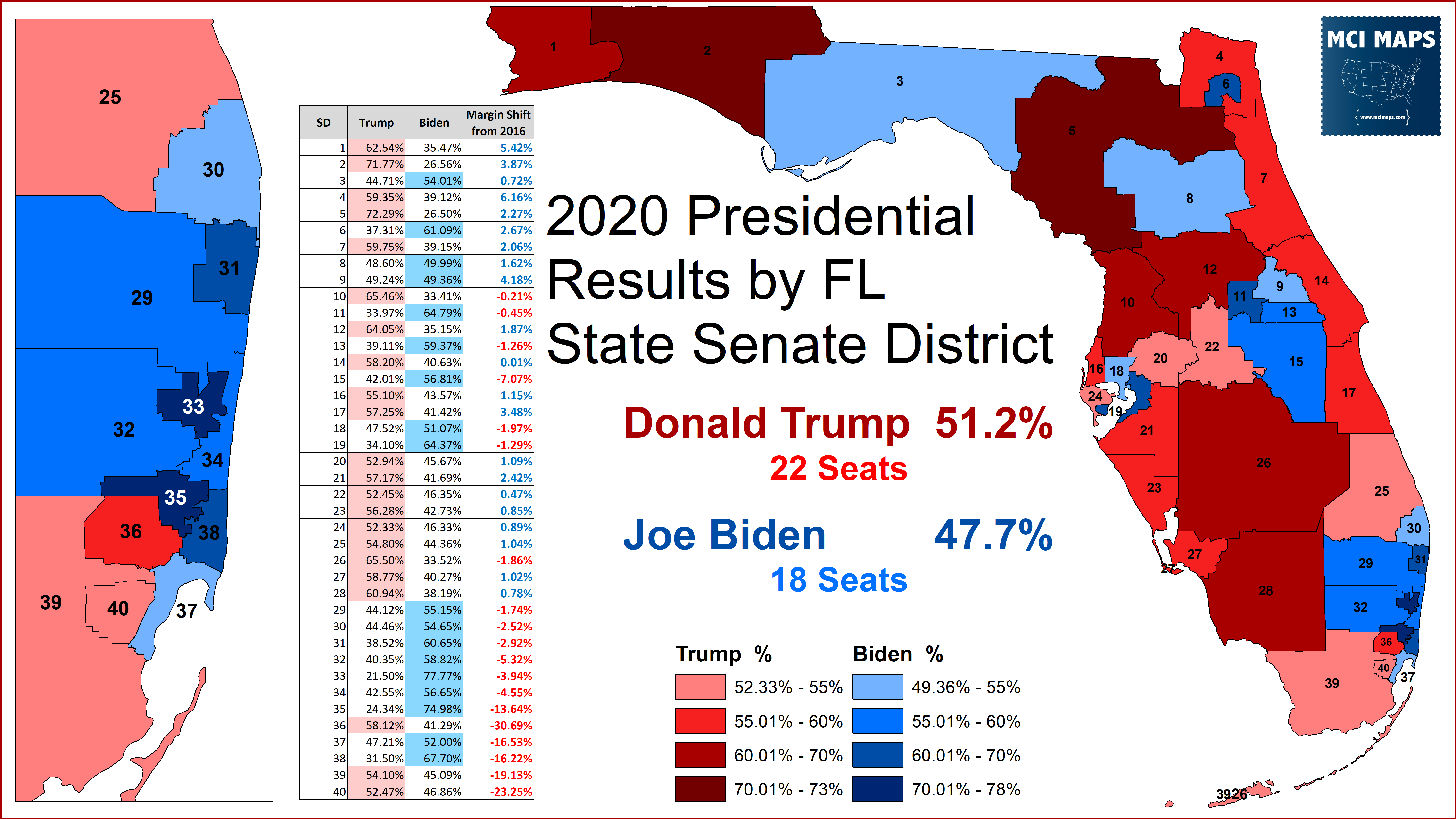In November of 2020, Donald Trump won Florida in his failed re-election bid. He took the state by 3.3% – which was the largest margin since Georgia W Bush’s 2004 win.
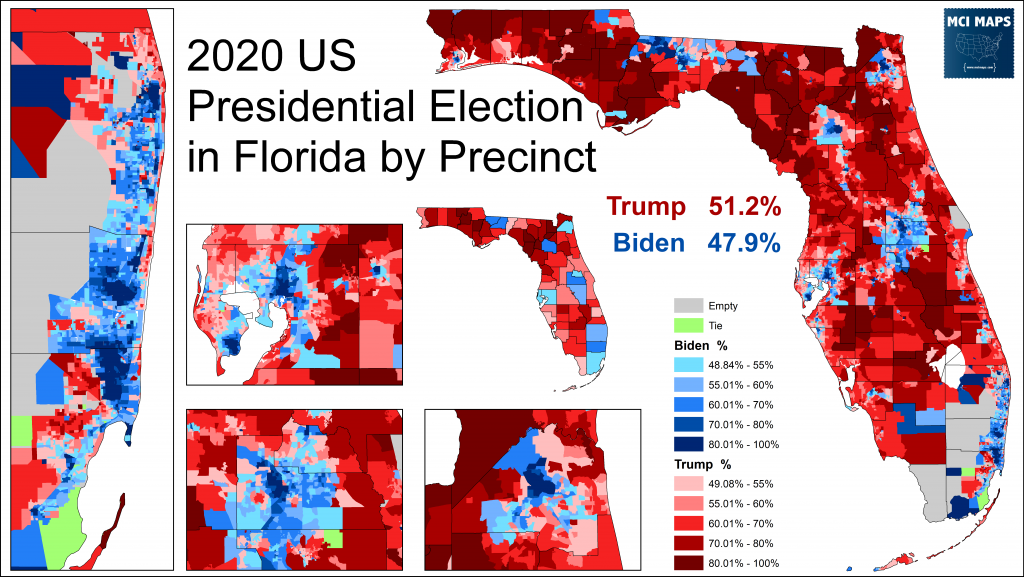
The win was primarily thanks to holding the working-class voters he gained in 2020 and major gains with Hispanic voters, as well as more modest gains with other non-white voters. Biden made gains in several suburbs, flipping historically-red Seminole and Duval county, and making some narrow working class gains.

The precinct-digging into Florida is being done by many data researchers and myself, and more will be written here in the future. For this article, I wanted to focus on the results by State Senate District. I will look at how the Presidential results broke down by each district – and how the state senate results came out.
How the Districts Voted
In 2020, Trump’s 1% win in Florida translated to winning 22/40 districts. This reflected the fair nature of the current map – which was passed in a very contentious redistricting process during 2016 after the old map was struck down.
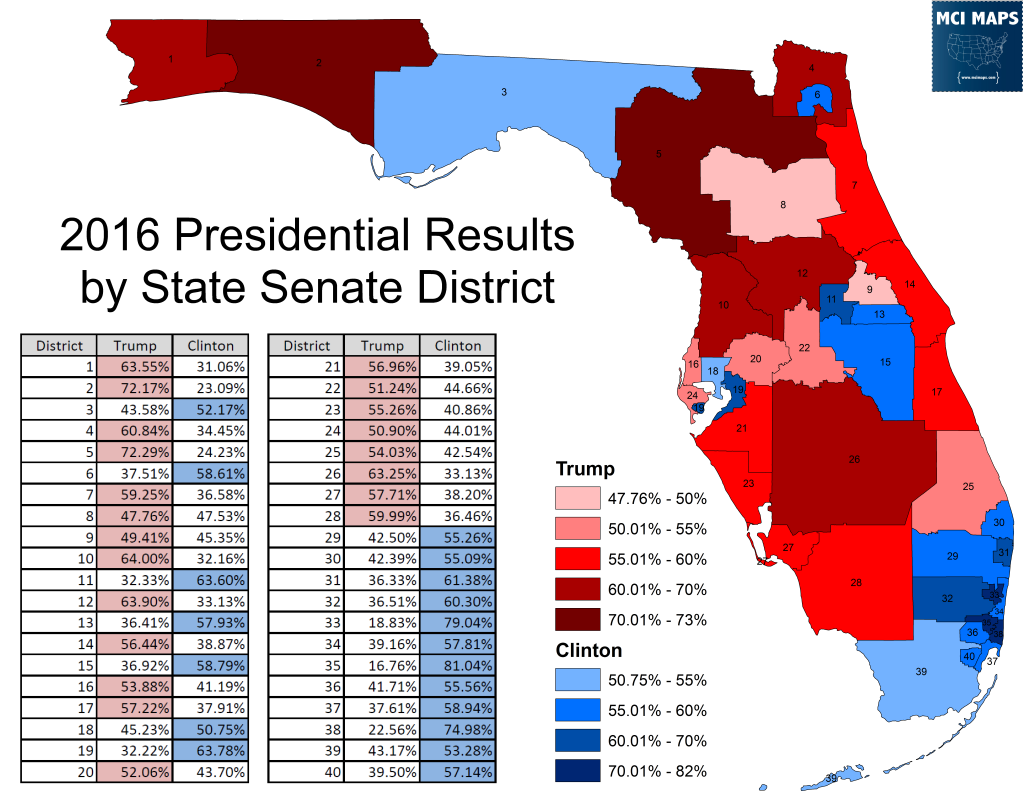
When 2018’s elections happen, the map continued to perform in-line with statewide results. Most Democrats won 19 seats, while Nikki Fried, who won her race for Agriculture Commissioner, won 20.
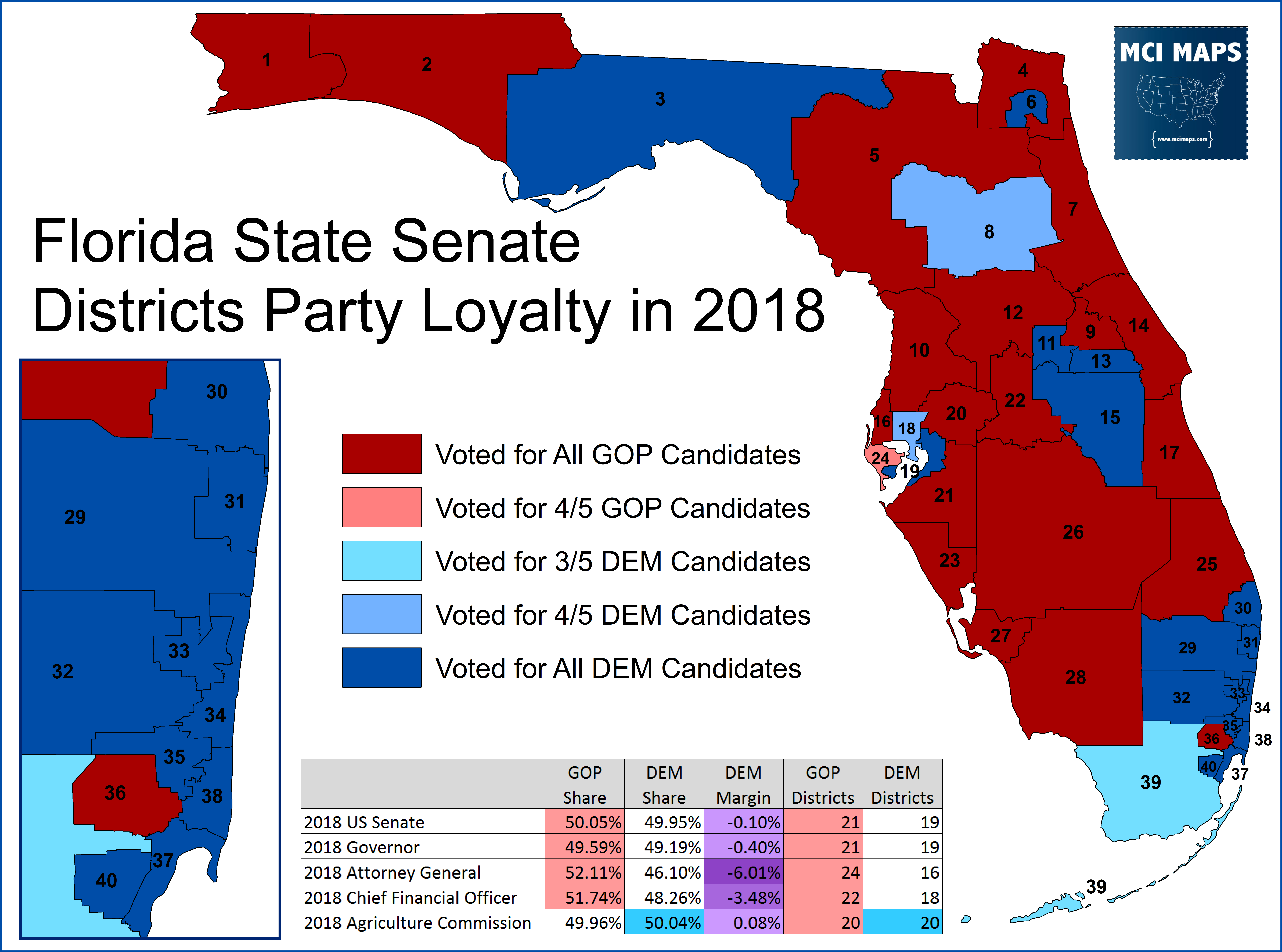
With Trump’s 3.5% win in 2020, the map saw several changes. Trump took 22 seats, just one better than his 2016 showing. However, five districts changed loyalties. Trump flipped the Dade-based 39th, 36th, and 40th while Biden flipped the 9th and 8th.
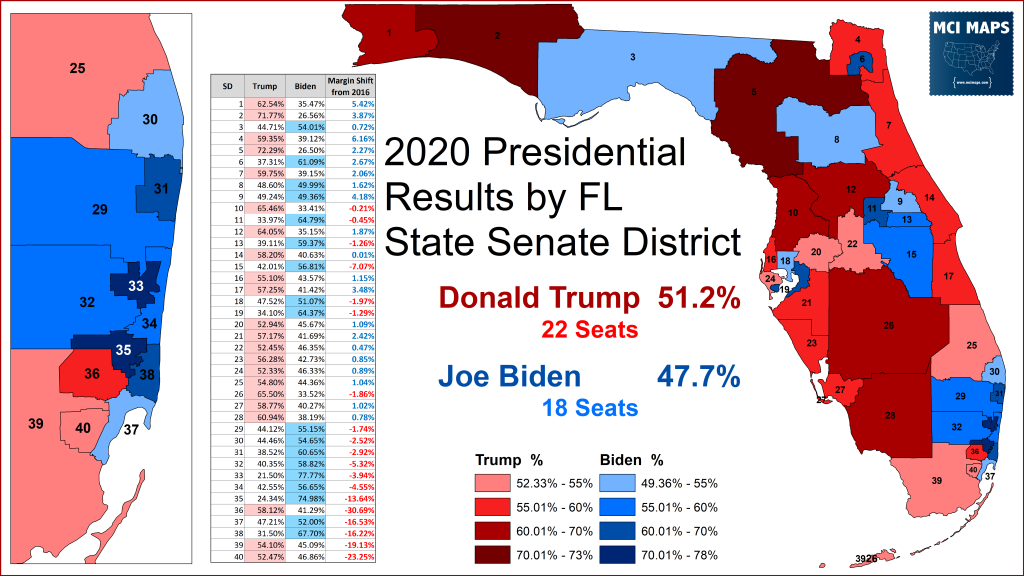
This five-seat shakeup reflected the changing demographic alliances of the state. The massive Hispanic swing in Miami-Dade (among Cuban’s and other nationalities like Venezuelans and Columbians) flipped three of its seats down there – with the 37th barely holding on for Biden. Meanwhile, suburban gains in Seminole flipped the 9th and suburban swings in Gainesville flipped the 8th.
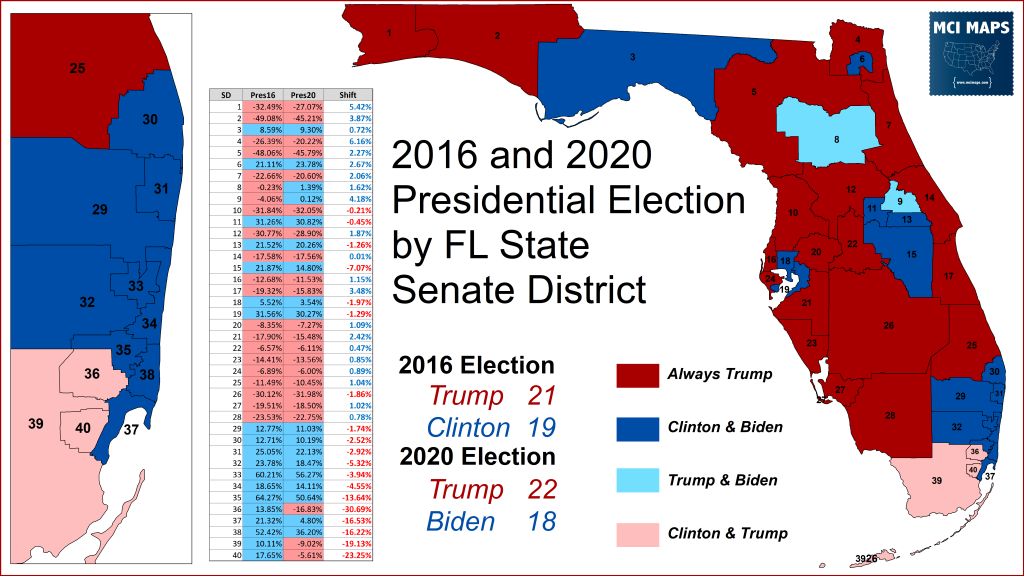
The shift in Presidential margin from 2016-2020 can be seen below. The Dade region stands out of course. With Hialeah-based SD36 taking the record for a 30% GOP-swing in margin!

However, Dade aside there were still other problems for Democrats. The African-American heavy 35th, 19th, and 11th also moved to the right. The 10th is a working class district that got worse for Democrats. The 13th, 30th, 15th and 18th also swung more GOP thanks to Hispanic populations wing. Biden gains over Clinton, meanwhile, never hit the same levels as Trump improved. Biden cracked 5%+ swings in the suburban and military-heavy 1st and 4th, but otherwise improvements were much smaller.
Comparing Biden’s results to the 2018 Gubernatorial election show Biden underperforming in southeast Florida and all of the African-American heavy districts. Gillum also managed to narrowly do better than Biden in most working class seats (like the 14th or 10th). Biden’s biggest improvements were in heavily white districts – largely those with a suburban or military presence.
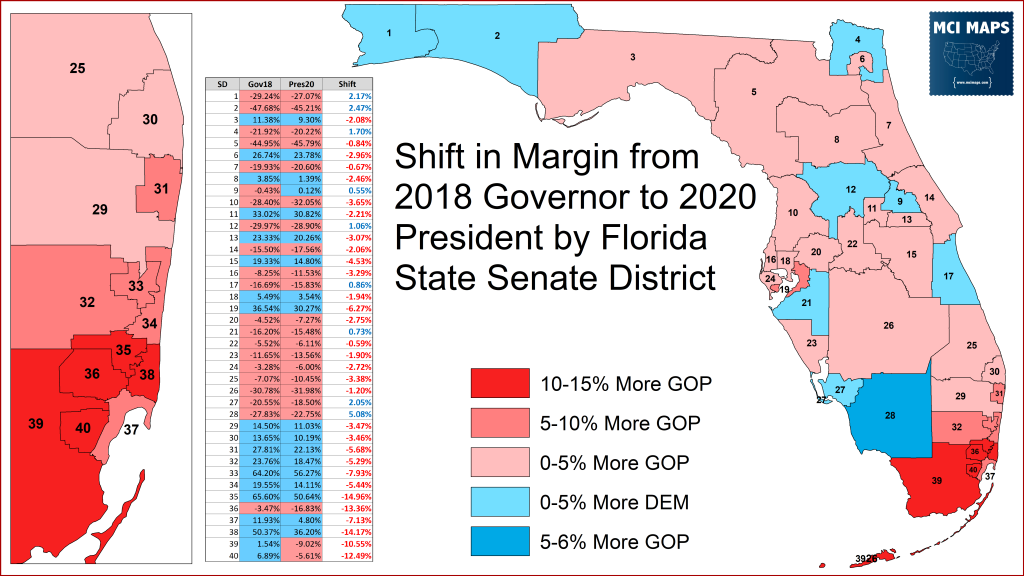
The trouble for Biden with Hispanic and working class voters can also be seen in comparing his results to Patrick Muprhy, who lost the 2016 Senate race to Marco Rubio. Biden did worse in most the southeast (the coastal 37th the exception) and rural 26 and working-class-heavy 10 and 25.
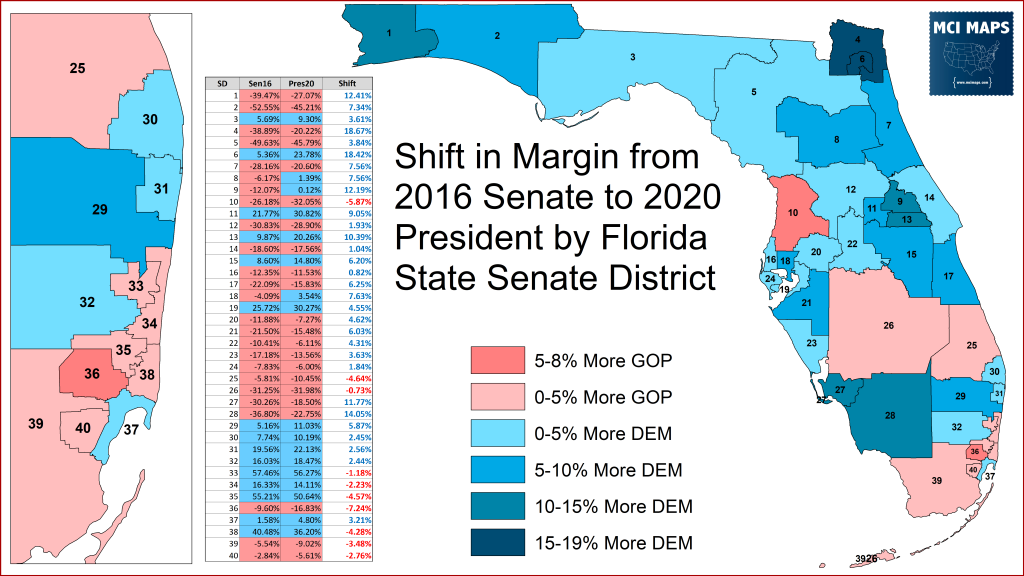
Biden’s fortunes aside, half the senate districts were up for election in 2020. How Biden did in these districts effected how the down-ballot went.
The State Senate Battleground
Heading into the 2020 state senate elections, Democrats held 17 seats out of 40, the highest number for the part of the 21st century. A new map passed in 2016 was allowing them to make slow gains after going into the new map with 14 spots. Democrats would have loved to gain 3-4 seats and tied or taken the chamber – but that was largely out of the cards due to which seats were up. The Democrats only had two realistic pickup opportunities; with everything else being their own defenses or redder districts. Democrats had to defend the 3rd and 37th from GOP focus while aimed to pick up the 9th and 39th. If the party could get to 19 seats heading into redistricting, it would be easier to work out a compromise map.
Unfortunately for the democrats, their pickup hopes for the 9th and 39th did not play out. In addition, they lost the 37th by just a handful of votes. The elections came as Biden was losing the state by the widest margin since 2004 and as the Florida Democratic Party was hit by scandal when it was revealed they illegally took a PPP loan (COVID aid) for their building fund. The decision to apply for and receive the loan was an internal affair that drew outcry from Republicans and the Democratic candidates and elected officials. The loan, while eventually returned, would be used by the FL GOP to attack every Democratic challenger and incumbent running.

The loss of a seat marked the first time the Democrats had lost ground since 2010.
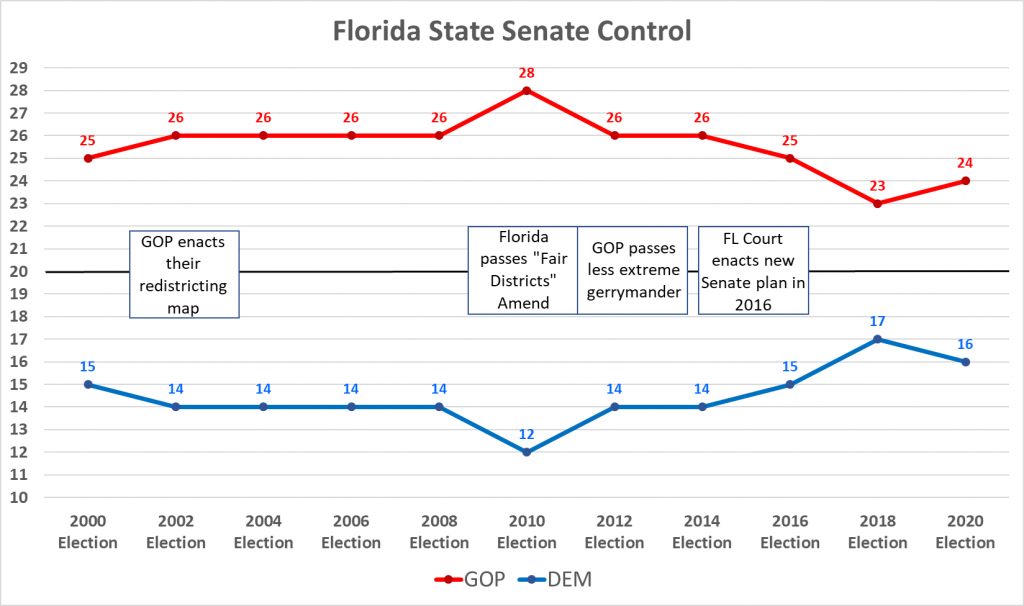
The precinct results for the state senate elections, and how the candidates did compared to their party candidate for President, is seen below.
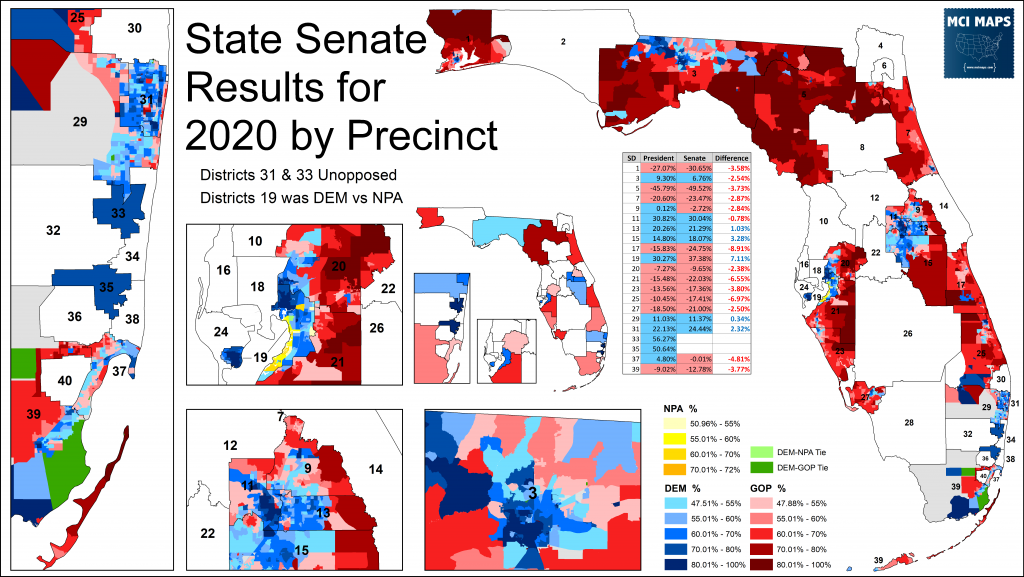
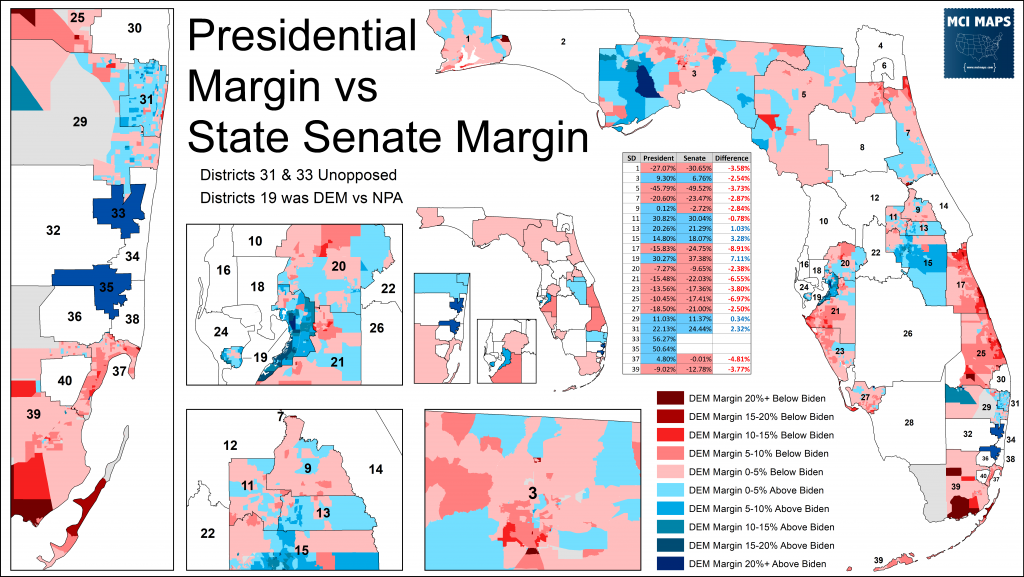
The results were heartbreaking for Democrats and a big victory for the GOP. Lets look at the top battleground districts to see how these races went.
Senate District 3
One of the districts on the edge of potential competitiveness was Senate District 3. Held by termed-out Democrat Bill Montford since 2010, the district includes Tallahassee and its surrounding rural neighbors. The seat had never been seriously targeted by the GOP before. In 2016, it voted for Clinton by a healthy 9% and Montford, a popular blue dog democrat, won a 34% re-election over an underfunded challenger.
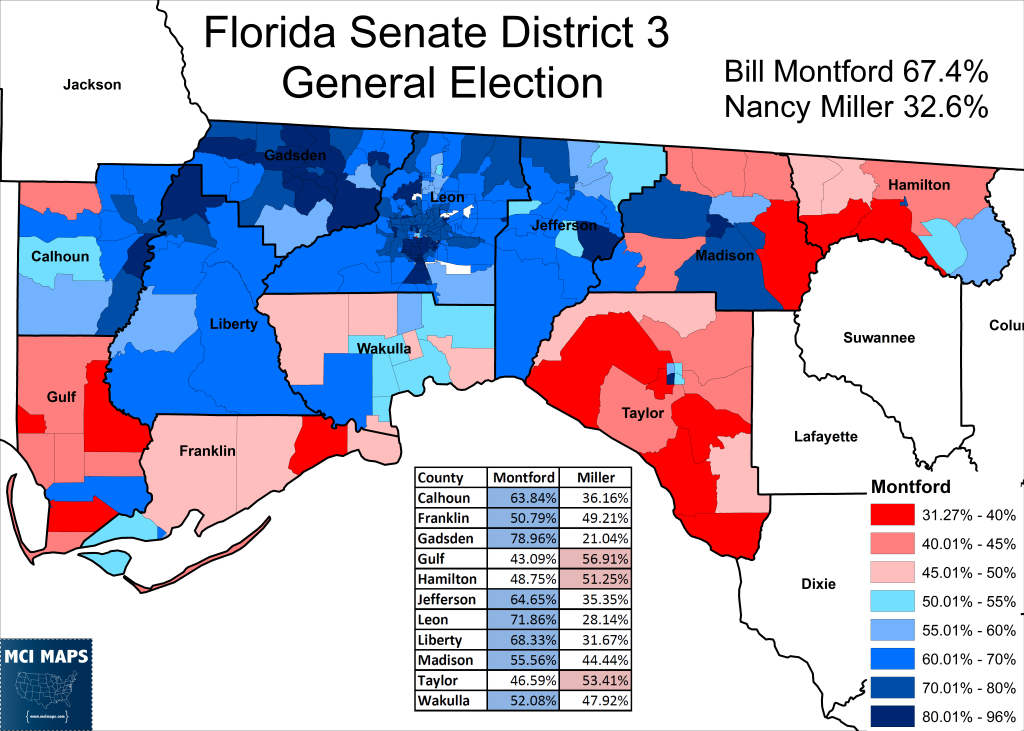
Montford’s retirement didn’t change the calculus for the parties. While a landslide wasn’t expected, any competent Democrat could hold the seat. Leon state rep Loranne Ausley was making plans to run for the seat for years. She quickly built a warchest of over $500,000 and had no Democratic opposition. Republicans recruited Marva Preston, an African-American former police officer who resided in Wakulla County. Preston first had to win a GOP primary. She faced off against “Benjamin Alexander Thaddeus John Horbowy”, a white nationalist stoner (yes you read that right) from Tallahassee. Horbowy had made press in recent months with nonsense antics but has no real following or money support. He barely raised anything for his race. The GOP, meanwhile, pumped tens of thousands into her race. The Republicans wanted to ensure they were not stick with Horbowy as their nominee, and they wanted to put pressure on Democrats in the district. The GOP money ensured Preston had near-universal media coverage, and she won the primary 79-21. The Republicans than began a major assault on the district – pumping in around $8 million attacking Ausley and promoting Preston. The Republican goal was simple; force the democrats to spend money in the district and distract them from their pickup goals. With much more funds at their disposal, the FL GOP could afford to spend this cash and play defense. For Democrats, such a diversion would hurt their wallet. Democrats were forced to answer with money of their own, but by most accounts not even a 1/4 of the GOP spending. Ausley herself was a strong fundraiser, helping save the FL DEMs from going broke in the process. In the end, Ausley won the seat by 7%. Her win came thanks to dominating in Leon and Gadsden; which control a vast majority of the votes cast.
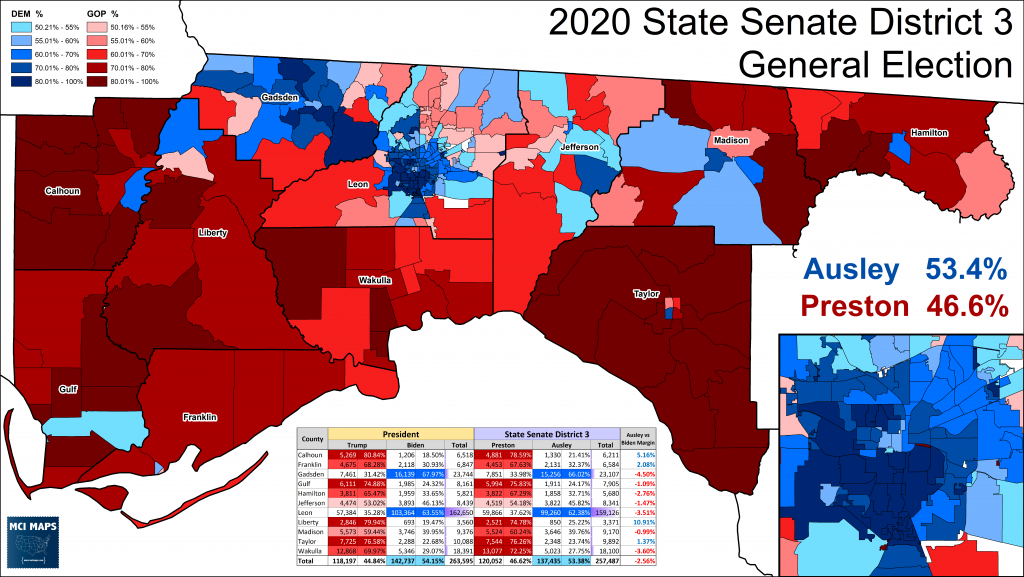
Ausley’s 6.7% win was a bit under Biden’s 9.3% win for the district. Ausley dipped below Biden in the African-American community but did outperform the now-President in many rural ‘ancestral democratic’ regions.
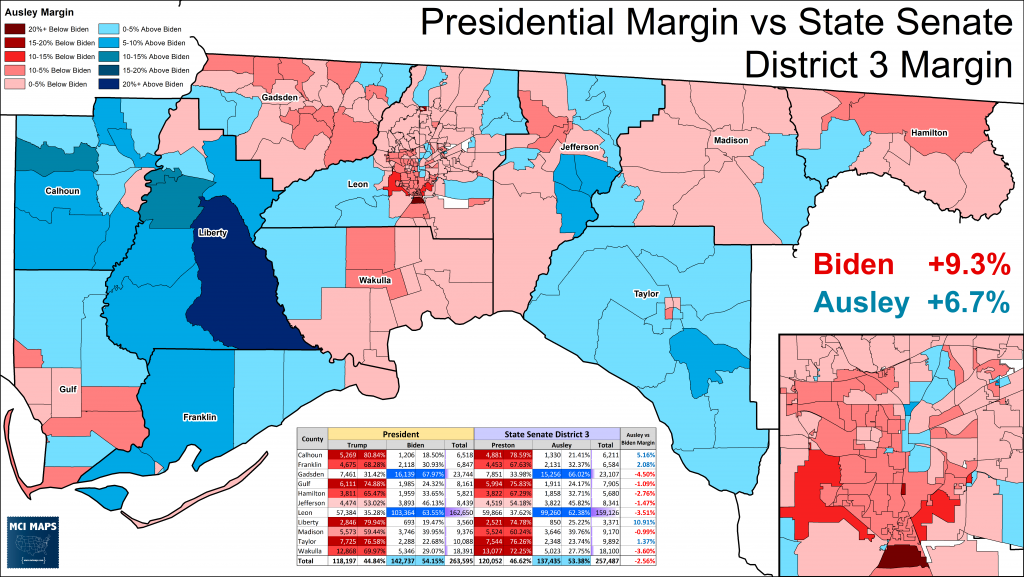
The third was realistically not elastic enough for Republicans to have a real shot at winning without a major Democratic scandal or lack of defense. By pumping the money in, they forced democrats to reply – which in the end was the GOP’s real goal.
Senate District 9
When State Senate District 9 was drawn in 2015-2016; it had a modest but steady GOP lean. The district includes all of Seminole and portions of southern Volusia County. The district voted for Romney by 8% in 2012. In the 2016 elections, the seat was uncontested by Democrats. 2020 and Trump’s effect on suburban voting behavior changed the calculus. Seminole had only narrowly gone Republican in 2016 while the FL-07 Congressional District (Seminole and part of Orange) had flipped to Democrats. Trump had won the 9th district by just 4% (49-45) and in 2018 the district was even closer; backing Republicans for Governor and US Senator by just a couple hundred votes. With the seat viewed as a potential Democratic target, both parties geared up for a fight.
The GOP already had their candidate; former State Rep Jason Brodeur. Termed out in 2018, Brodeur had been campaigning for the district since he left the house. Democrats recruited labor attorney Patricia Sigman for the seat. She raised hundreds of thousands of dollars but faced a crowded primary field. The primary drew attention when GOP-backed dark-money groups began running ads in the primary attacking Sigman as if they are a left-leaning group. The committee appears to have been breaking campaign finance laws to hide its donors and after Democrats filed a complaint, the committee shut down. The GOP aimed to force Democratic groups to spend money to ensure Sigman won; showing they knew the seat was under threat. In the end, Sigman won her primary easily – taking 50% in a 5-way primary (her nearest opponent at 17%).
The general election was a nasty affair. Highlights included Sigman being attacked for the Florida Democratic Party taking out the PPP loan while Brodeur was attacked for his right-wing voting record and questions about if he truly lived in the district anymore. The general consensus from polling and operatives was that Biden was expected to win the district by a few points thanks to suburban swing to the left but Brodeur could hang on if there was enough ticket-splitting. In the end, Broduer managed a 3% win while Biden just narrowly took the district.
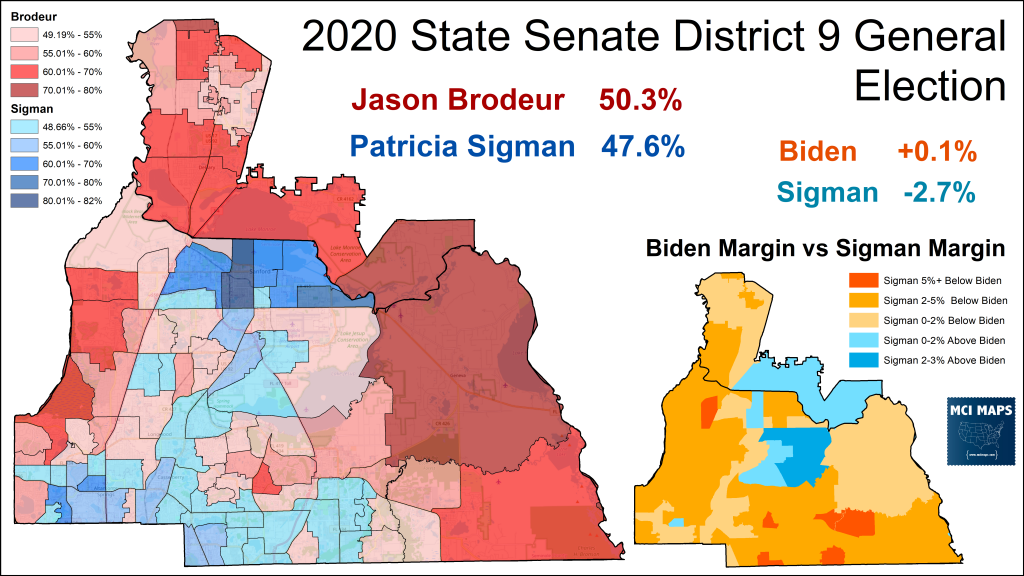
Biden’s narrow win, just a few hundred votes, definitely hurt Sigman’s chances. A GOP-favored ticket-split was expected since this was a longtime GOP area. While Biden won Seminole, his poor showing in working-class Volusia hindered his SD9 margin. Sigman made a very strong showing for a first time candidate, but this was a major blow to FL Democrats and and a sign the suburban swing wasn’t as strong as Florida as Democrats were hoping.
Senate District 37
2016 saw one of the biggest State Senate battles in modern Florida. Senate District 37, borders redrawn due to the mid-decade redistricting, saw both parties pour millions into the area. Democratic State Rep Jose Javier Rodriguez challenged State Senate Miguel Diaz de la Portilla. DLP, part of a powerful Cuban political family, was defeated by JJR, an upstart who had won contentious state house elections in 2012 and 2014.
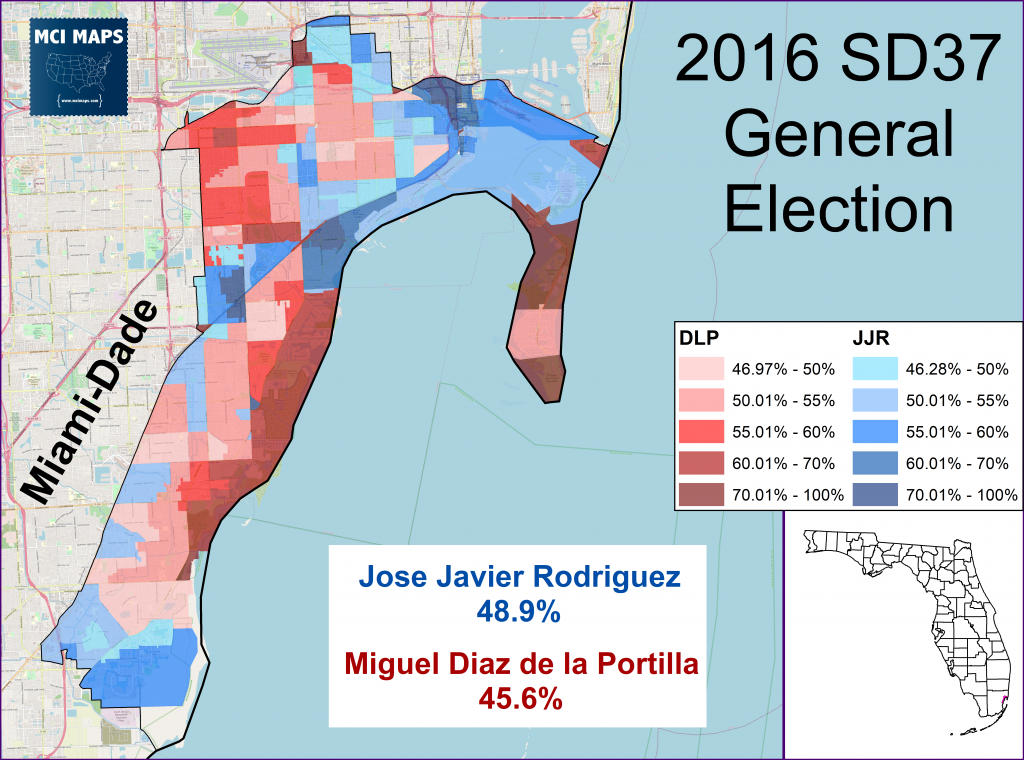
JJR’s 3% win came the same night that Hillary Clinton scored record margins in Miami-Dade county. She win the 37th by an insane 21% points. Ticket-splitting in Miami-Dade was at its height at this point. Many Cuban voters were uncomfortable with Trump, but still much more loyally Republican down-ballot.
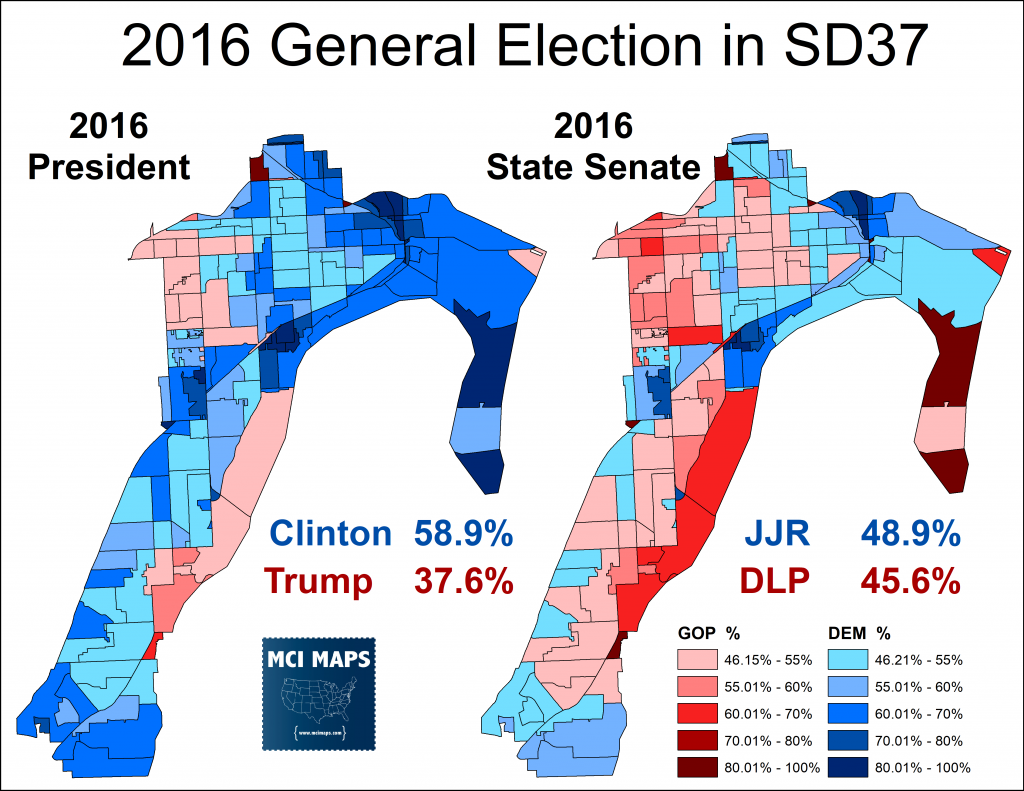
Heading into 2020, JJR was seen as a strong candidate for re-election. He had survived contentious elections in the past, and the area of the 37th was trending bluer. Even as Dade swung modestly to the right in 2018, it wasn’t as notable as it was in the 37th. That said, Republicans didn’t put the district out of their radar. They recruited a newcomer to elected office – Ileana Garcia – to run for the seat and fed her campaign cash. JJR didn’t sit on his hands and was running a campaign. However, it was expected that baring any major scandal, JJR would hold on.
What JJR got caught by, however, was the noted Biden slump in Miami-Dade county. The massive GOP swing in the county led to Biden only caring the 37th by 5%. JJR, meanwhile, was neck-and-neck as counting went on. Eventually he fell by 32 votes.
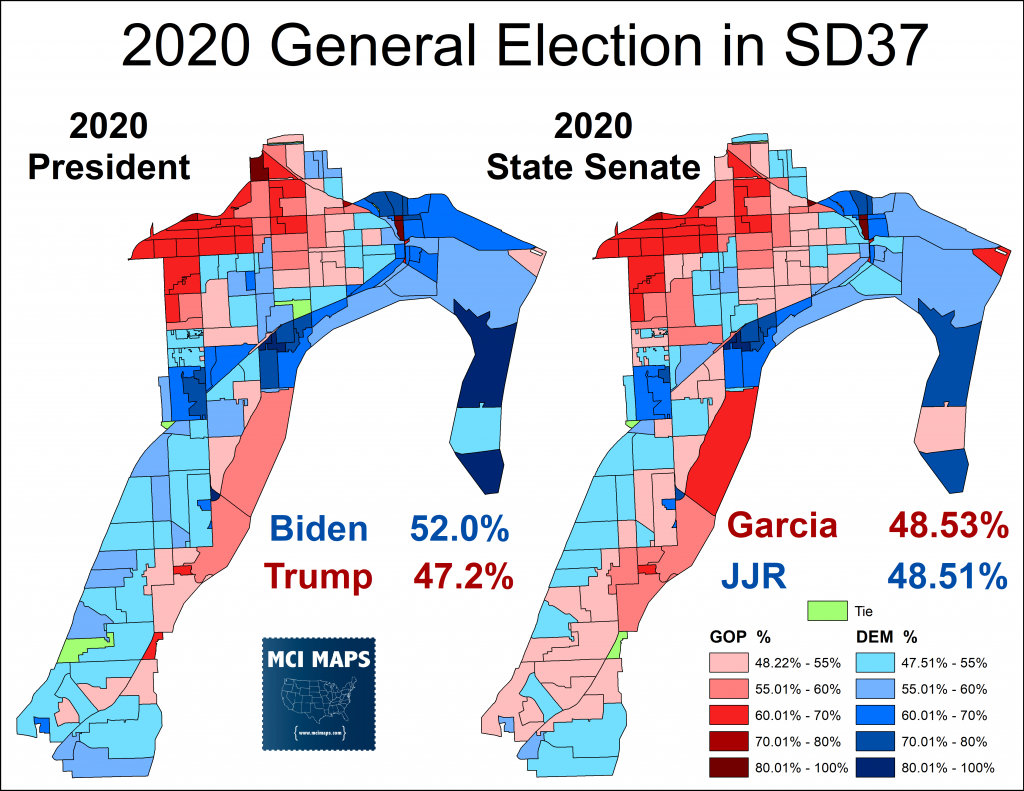
The slide in the 37th is a different story for President or State Senate. The 17 point slide for President was across the district – from its Cuban-heavy North to its more diverse southern communities. For JJR, however, he actually did better in the southern portions of the district than he had four years prior. However, he did worse in the Cuban north thanks to a complete collapse in the Democratic brand.
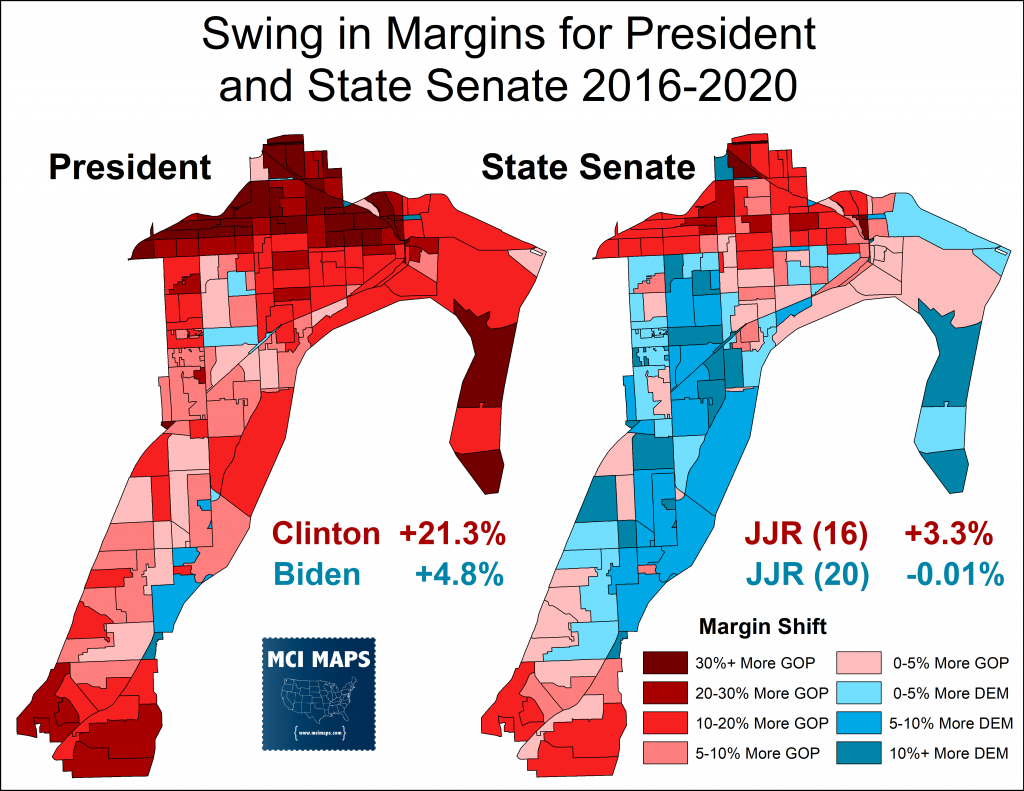
The collapse for Biden resulted in far less ticket-splitting than four years ago. While JJR underperformed Biden by 5%, this was much less than the 18% in 2016.
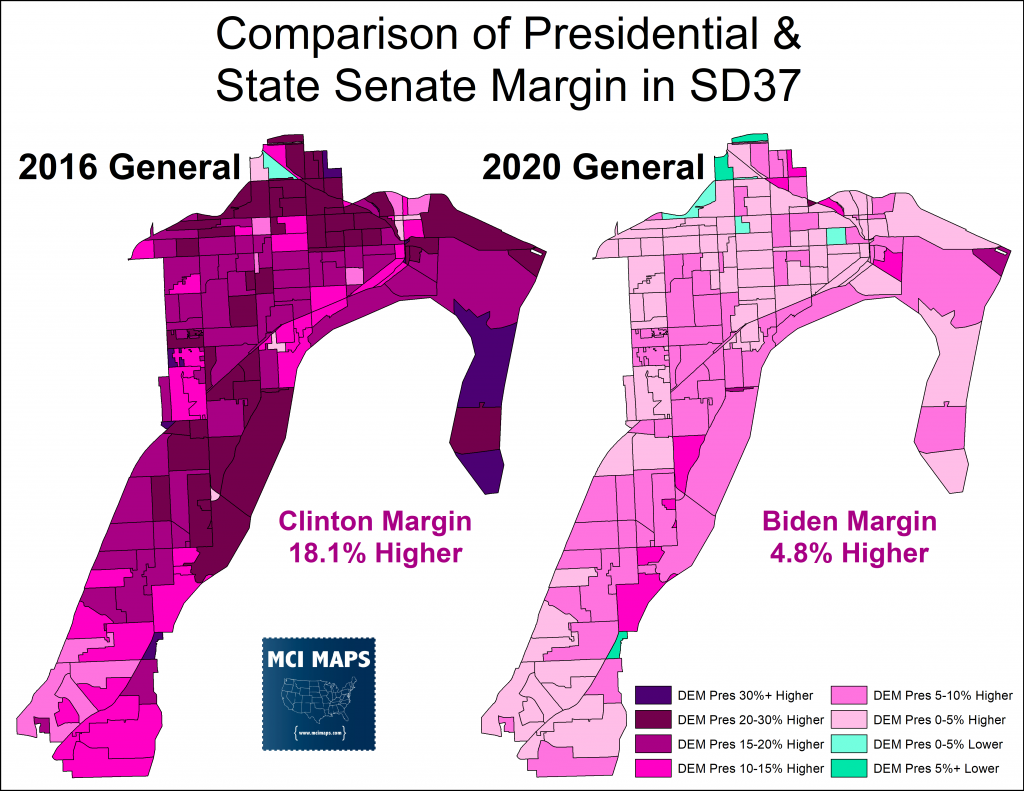
The collapse for Biden resulted in much less ticket splitting in 2020 compared to 2016 (showing Clinton’s margins were more about that specific race than party reputation).
Another wrinkle exists in this race. An independent candidate named Alex Rodriguez 3.0% of the vote in this close race. Rodriguez mysteriously had support from campaign committees sending mailers on his behalf – with a liberal edge to them to put him in competition with JJR for liberal votes. The committees were tied to GOP strategists, who in recent weeks have aimed to amendment reports and hide donors. There is no secret here, Rodriguez was put into the race to be a name that GOP-funded mailers would support by claiming he was left and take votes from JJR. The whole situation happened in SD9 as well (though it didn’t decide the contest) and the Miami-Dade State Attorney is investigating the candidacy. As the article notes, Rodriguez may be in trouble because he listed an address in SD37, but its a house he hasn’t lived at for 5 years. He now lives in Palm Beach County. It has also come to light that disgraced former State Senator Frank Artiles, who was forced out of office in 2017, has claimed credit for recruiting Rodriguez.
More will likely emerge about this sordid race.
Senate District 39
State Senate District 39 was considered the top Democratic pickup opportunity of the 2020 cycle. The district had voted for Clinton by 10% in 2016 and its popular Senator, Anitre Flores, was termed-out. One of four Hispanic-Majority state senate districts in Dade County; the seat covers Cuban communities in its north, includes the southern Dade cities of Homestead, and all of the Florida Keys.
The original GOP nominee was always expected to be State Rep Jeanette Nuñez; who had already been raising money for a run years ahead of time. However, she was elected as Lt Governor in 2018, and the GOP instead recruited newly-elected state rep Ana Maria Rodriguez. Democrats managed to recruit Javier Fernandez, who had won a contentious special election to HD114 in 2018. Both parties had fairly new state reps running for a state senate seat. Even with Dade’s ticket-splitting history, this still seemed like a strong Democratic pickup shot.
What Democrats did not see coming, however, was the collapse of Democratic support in Miami-Dade. Biden wound up losing the district by 9 points; and with that Fernandez lost by 13.
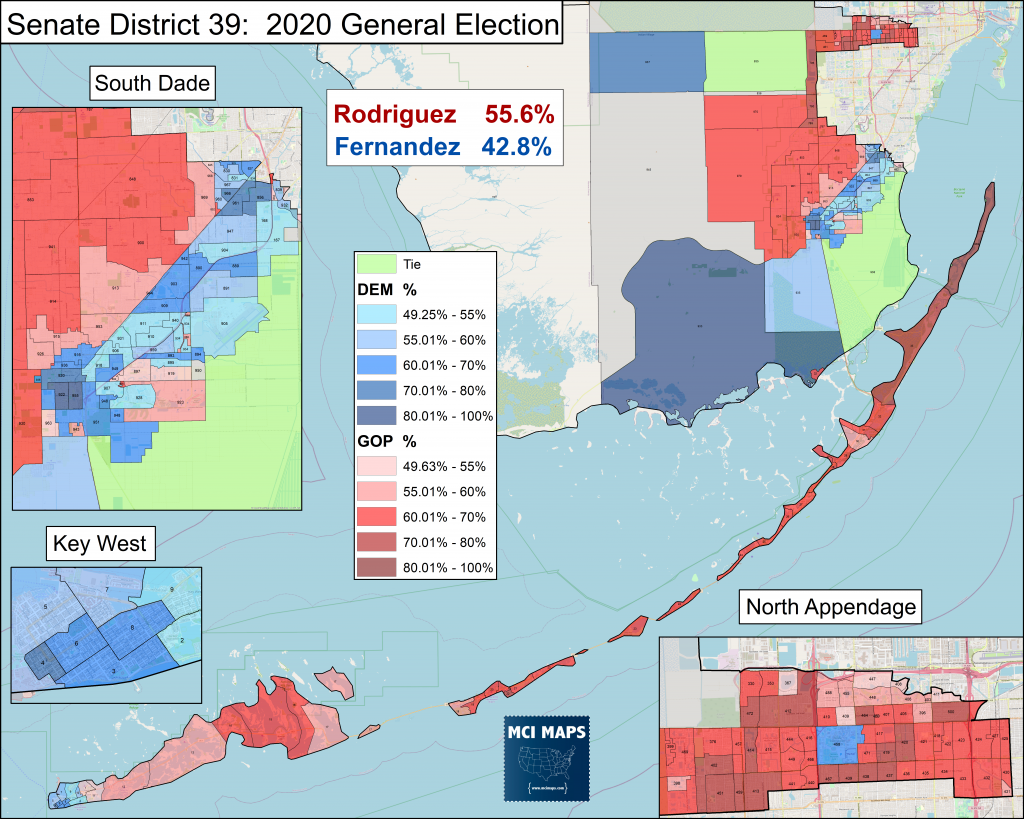
The “Northern Appendage” – which exists to meet the district’s maj-Hispanic status – is heavily Cuban and was a major site of Democratic collapse in the district. Key West and south Dade corridor were the only major Democratic pockets.
Redistricting
Democrats are not in a good position heading into redistricting. How the lines shape out will largely depend on how well the GOP can keep its caucus together (something they failed at in the 2016 redraw). The effect of the lines could be modest to severe. Looking at the old borders, Biden won one less district than under the current lines.
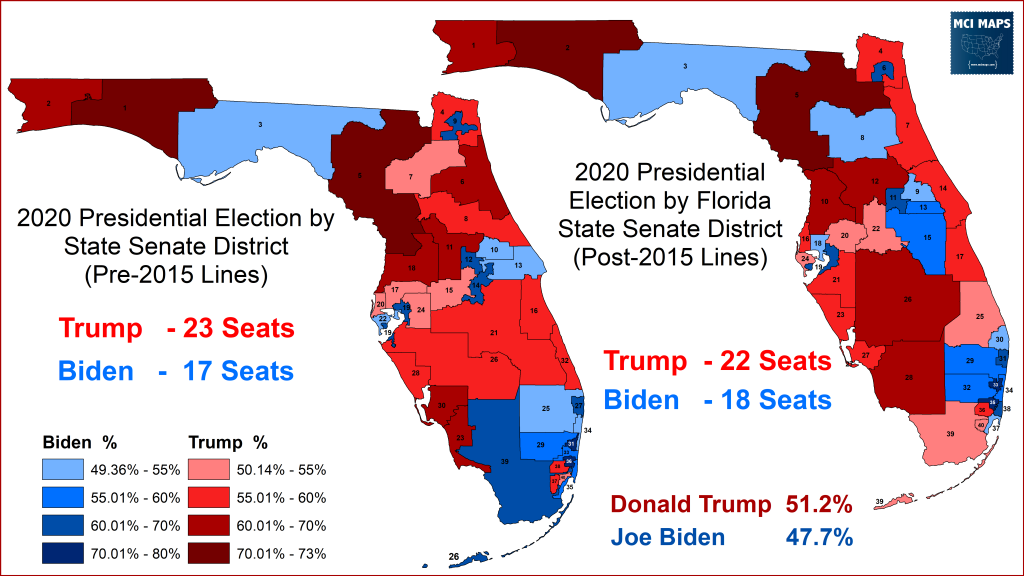
This map, while only one less Biden seat, was also much less elastic, with alot of narrow dem wins and much more solid GOP paths to 21 seats. The Republicans will decide how they redraw the borders and how aggressive to be.

